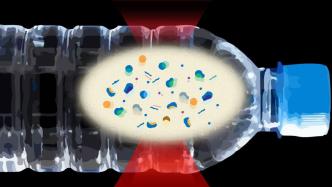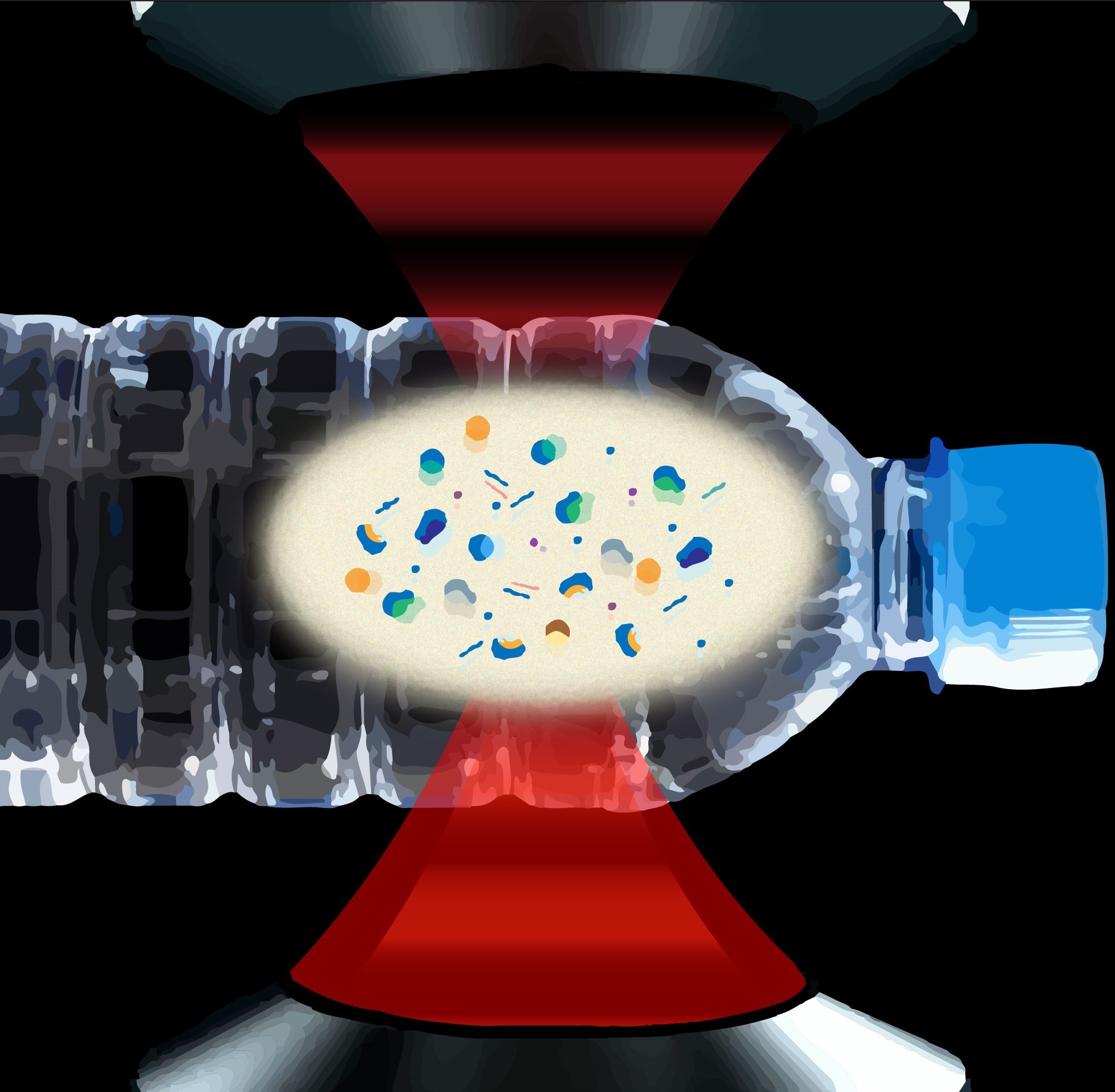

Scientists have used lasers to image hundreds of thousands of tiny, previously invisible plastic particles in bottled water. Naixin Qian, Columbia University
In the early morning of January 9, Beijing time, a new study published online in the international academic journal "Proceedings of the National Academy of Sciences" (PNAS) stated that using the latest detection technology, researchers found a large number of tiny plastic particles in three best-selling bottled waters in the United States. : Between 110,000 and 370,000 plastic particles were found per liter of bottled water. Among them, 90% of plastic particles are smaller than 1 micron and are called nanoplastics. They had been overlooked in previous tests.
The researchers did not disclose the specific brands of the bottled water.
The title of the paper is "Rapid single-particle chemical imaging of nanoplastics by SRS microscopy".
Nanoplastics are different from microplastics. Because nanoplastics are so tiny, they can pass through intestinal or lung cells, enter the bloodstream, and even reach the heart and brain. Nanoplastics can even cross the placenta and enter the fetus.
The diameter of human hair is approximately 70 microns. Microplastics are defined as plastic fragments ranging in size from 5 millimeters to 1 micron. Nanoplastics are particles smaller than 1 micron in size, measured in billionths of a meter.
From polar ice to soil, drinking water and food, researchers say, "There is a huge world of nanoplastics waiting to be studied."
A 2018 study found that bottled water contained an average of 325 plastic particles per liter.
But the newly published research used a detection technique called stimulated Raman scattering microscopy (SRS). Two laser beams are tuned to resonate with specific molecules to detect the sample. The researchers also plan to use the technology to test tap water. They will also work with environmental health experts to measure nanoplastics in various human tissues and examine their effects on development and the nervous system.
The annual global plastic production is close to 400 million tons. More than 30 million tons of plastic are dumped in water or on land every year. Many products made of plastic, including synthetic textiles, shed plastic particles during use. Unlike natural organic matter, most plastics do not break down into relatively benign substances. They simply break into smaller and smaller particles with the same chemical composition. There is theoretically no limit to their size except for single molecules.
Researchers identified seven specific nanoplastic particles in the aforementioned bottled water, such as polystyrene, polyvinyl chloride, PET (polyethylene terephthalate), polyamide (a type of nylon), etc.
Polyamide particles, which may come from the plastic filters used to filter and purify water before bottling, outnumber PET.
PET is the material that many plastic bottles are made of. When bottles are squeezed or heated, plastic particles can break off and enter the water. When people repeatedly open or close lids, plastic particles from wear and tear can also enter the water.
In one disturbing piece of news, the seven plastic particle types the researchers found accounted for only about 10 percent of all the nanoparticles they found in their samples. What the rest of the plastic particles are, people don't know yet.
Paper link: 10.1073/pnas.2300582121